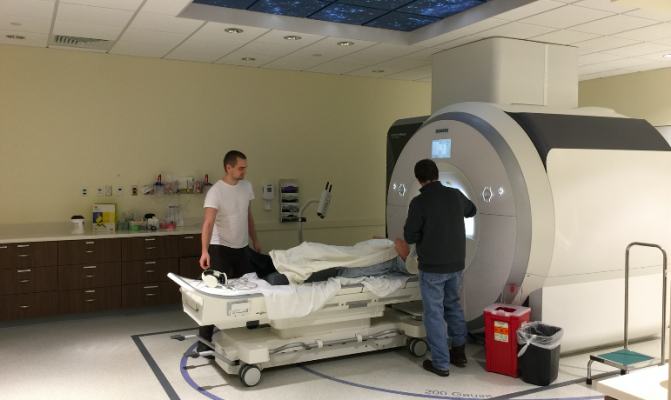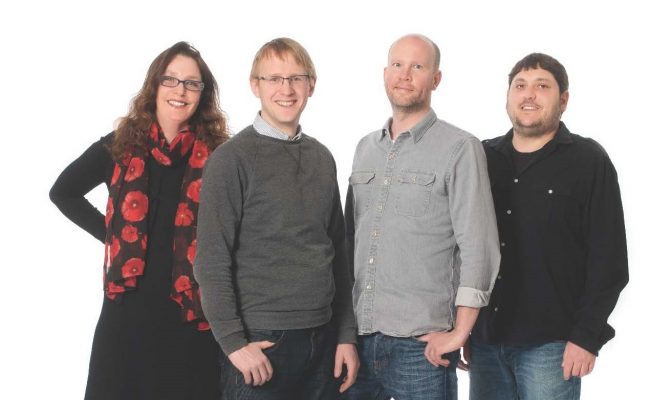By measuring cell membrane permeability and cell shape with their new methods, Swedish research company CR Development wants to improve cancer diagnostics via MRI scans.
Eureka
Scientists Karin Bryskhe and Anna Stenstam were having coffee when their colleague Daniel Toppgaard came into the room reclaiming that he had found a way of measuring cell membrane permeability.
“We both looked at him and said ‘Well, that sounds exciting. Why?'”, remembers Karin, CEO and Founder of CR Development.
“He replied: ‘Because I can’.”
This was the start of CR Development, a Lund based research company which works in close collaboration with Lund University and Harvard Medical School. Ten years have passed but their mission remains the same: To improve MRI scans for diagnosing cancer.
After testing their measuring methods on cancer cell samples in test tubes, the research trio decided to pursue their vision and patent the method with the help of a team at Awapatent. The concept is to use it in MRI scanners which are commonly used to locate and diagnose cancer tumours.
A piece of the puzzle
Daniel’s discovery of measuring cell membrane permeability and cell shape is integrated into an MRI camera. The MRI operates with a magnetic field, hence its name Magnetic Resonance Imaging. The magnetic field enables you to contract images from the patient. However, to get an image you need to control the magnetic field in different directions, intensity levels and gradients which is done by a combination of pulses and gradients.
CR Development’s measuring methods is a new way of controlling the magnetic field. It can be described as recipe of pulses and gradients controlling the camera field in a unique way which means that you get new and different information from the MRI scan. It could be cell membrane permeability, but also the shape of the cells or the capillary blood flow in the tumour. A regular MRI camera can’t contract this detailed information on its own.
“It can take up to three months for the doctors to evaluate if their patient is responding to treatment. Often the patients end up suffering in vain. Ideally, you should know within a couple of days if treatment is not working so you can start looking for alternatives.”-Karin Bryskhe
The new information provides physicians with additional pieces to the complex puzzle that cancer diagnostics actually is. Today, when an MRI scan locates a tumour it can be difficult to determine what type of cancer it is. For this reason, the next step is often to proceed with a biopsy. When a biopsy is analysed, one of the features taken into account is the shape of the cells. Biopsies are invasive and pose a risk of the cancer spreading through what is called seeding. In addition, the patient often has to wait for two to three weeks to get their test results.
CR Development offers a different solution to the traditional biopsy. The technique is a virtual biopsy which immediately can see the shape of the cancer cells during an MRI scan.
Cancer treatment
Another potential use of the new method is during cancer treatment. When a patient is undergoing chemotherapy or radiation treatment, the physician use blood tests and MRI scans to ensure the tumour is shrinking and the patient is responding to treatment.
“It can take up to three months for the doctors to evaluate if their patient is responding to treatment. Often the patients end up suffering in vain. Ideally, you should know within a couple of days if treatment is not working so you can start looking for alternatives,” says Karin.
“Often tumours are over treated. Some tumours don’t even require any treatment and retract on their own. Our method is excellent at quickly detecting if the cell membrane is breaking, which could imply that the treatment is working.”
“Ultimately, it will probably be a combination of existing and new methods which do the trick. It is like a puzzle for the doctors; they need all the information they can get. But I do believe that our method will be an important part of that puzzle.”
IP business
Karin and her colleagues are currently testing the method on patients with prostate cancer. They recently closed a small study for brain tumours proving that the information obtained by their method can be correlated with the tumour type.
“We will start new prostate and brain tumour projects. It takes time to prove this works. We said two years when we started out and it’s been a decade now,” says Karin.
CR Development’s business model is working together with manufacturers of MRI cameras. Without the camera, the method cannot be used. The manufacturers need proof that it works on real patients before they get onboard. Another important aspect of licensing their concept is IP.
“Our patents are crucial for two reasons: We need to protect our idea, but the most important aspect is that it is our asset which we intend to license and sell to manufacturers of MRI cameras,” explains Karin.
“Without IP, this would be impossible. In addition, it has helped us secure bank loans and get investors. We have patented exactly what we believe the manufacturers want and covered the geographical areas where their biggest markets are located. We have about ten patents today.
“For us, Awapatent does a lot more than just patent drafting. They are our IP strategists and manage our patents. They are our IP department.”
Proving a point
Within the next three years, Karin hopes to have solid proof that their method works on cancer patients. Next step is getting back to the manufacturers she has already been in touch with. It has taken a long time, but Karin remains motivated to prove the efficiency of their method.
“What drives me? Well, we all have friends and family affected by cancer. I have seen it up close and it is hard to watch people you care about going through difficult cancer treatments.
“But having said that, what drives me the most is the fact that I want to prove that it is technically possible to do this. I want to prove it to myself and my colleagues. I am still convinced that it will work.”
CR Development
For more information on CR Development, please visit their website http://www.crdev.se/





